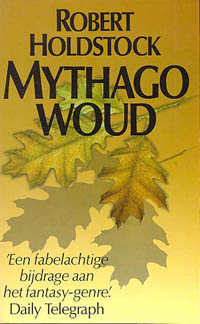

So why did I give this four stars instead of five, if I like the basic idea so much? Especially since it won the World Fantasy Award in '85? The obsession cuts away at all the other things that make a person real until they are both bigger than life and much, much less. Or here's a big concern: regular people becoming myth and thereby gaining. The quest for the mythological not-girl, brothers killing brothers. Maybe a bit like this: San Greal = Sang Real. Or, if you want to look at it in a different way, it's the Grail quest motif as a symbol for the generative impulse. In this book, we're treated to an IDEA of fantasy that is part-Jungian but mostly a Freudian obsessional extreme. The '80s are a time of huge psychological infusion in literature and I always tend to like the IDEA of that more than the actual works that use it.


Aren't they all an interrelated tapestry? I tend to love the era's SF and horror, so I often feel like I'm poo-pooing it unnecessarily. okay." to a "hate" relationship to most 80's fantasy. He lives in Philadelphia with his wife, Marianne Porter.I generally have an "um. He has also written over a hundred and fifty short stories - including the Mongolian Wizard series on Tor.com - and countless works of flash fiction. His novels include Stations of the Tide, Bones of the Earth, two Darger and Surplus novels, and The Iron Dragon's Mother. MICHAEL SWANWICK has received the Nebula, Theodore Sturgeon, World Fantasy and Hugo Awards, and has the pleasant distinction of having been nominated for and lost more of these same awards than any other writer. His interest in Celtic and Nordic mythology was prominently reflected in his accalimed Merlin Codex trilogy, consisting of Celtika, The Iron Grail, and The Broken Kings, published between 20. Among its several sequels, Lavondyss (1988) won the BFSA Award.

Mythago Wood (1984), the novel that made his reputation, won the World Fantasy and BSFA Awards. ROBERT HOLDSTOCK (1948-2009) was widely regarded as one of the greatest fantasists of his time.


 0 kommentar(er)
0 kommentar(er)
